YouTube is definitely one of the first platforms that come to mind when it comes to visual social media. YouTube shares its leadership in visual social media with Instagram. But as you know, IG is a platform that only allows its users to share photos and short videos. It would not be right to deny how successful they are in this field. However, when it comes to videos, you must accept the fact that YouTube is the undisputed leader in its field today. YouTube’s success in its field is not only due to the user experience it offers to its visitors. It is also a platform that provides YouTubers with the best resources and opportunities. Thus, everyone who has the idea of making money by sharing videos longer than 5 minutes on average flock here. But is this enough? And what do you need to know about the YouTube algorithm?
Important Statistics About YouTube
We talked about how important YouTube is and its leadership in its field. But, I’m sure you already knew that. Well, what if I told you about interesting statistics about YouTube? If you’re interested in YouTube, these numbers will certainly interest you. Even those who are not closely related to YouTube may be surprised by these statistics. Therefore, we have prepared a list of important statistical data about YouTube. So, let’s get started.
- As you know, Google is the largest search engine in the internet world. Of course, there is nothing surprising in this. After Google, YouTube is the largest search engine in the online world.
- I know our topic is YouTube. But, when it comes to the internet, it is impossible not to mention Google. Again, unsurprisingly, Google is the most visited website in the internet world. The second website with this title on the internet after Google is YouTube, again.
- YouTube has a total of 1.9 billion users in the entire internet world. This huge number of users makes YouTube the second-largest social media platform in the world.
- YouTube users upload an average of 500 hours of videos per minute to the platform.
- YouTube users watch a total of one billion hours of video every day on this platform. This average is even higher than the average of Facebook and Netflix platforms combined.
- On average, almost ¾ of YouTube users watch videos on mobile devices. For each mobile device included in this statistic, there is an average of 40 minutes of video viewing sessions.
- In line with the mobile statistics, the average number of mobile devices viewing at least one video per day is one billion.
- On average, more than 4 out of 5 parents can find content for their children on YouTube.
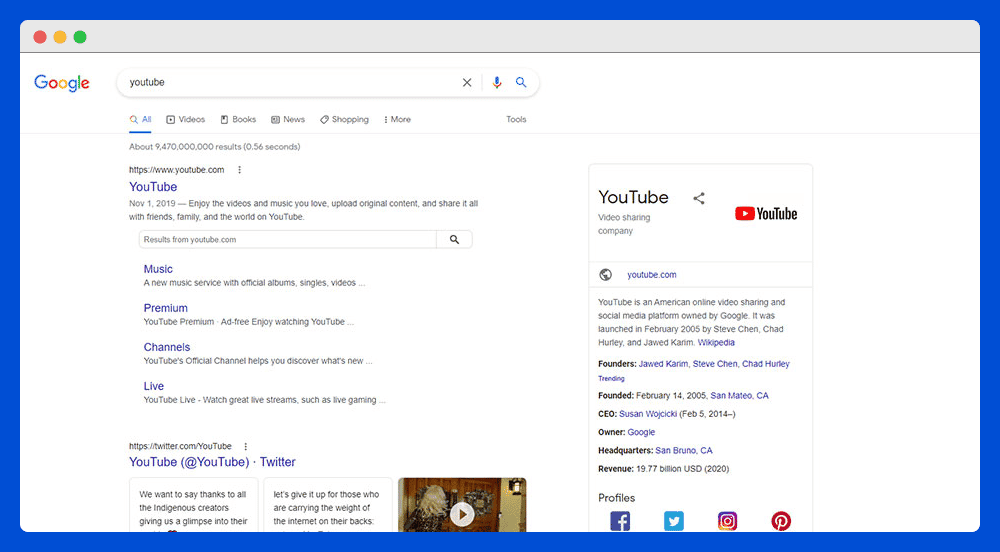
Why Is YouTube Important?
Of course, it served a purpose for us to explain the important statistics about it before explaining the importance of YouTube. These statistical data will make it easier for you to understand the importance of YouTube on the topics we will talk about now. The statistical data we mentioned above reveals something important. YouTube is one of the two biggest social media platforms you can benefit from in terms of audience reach. That is, it offers a unique environment for businesses to carry out their marketing and advertising activities. Just think about it. There is a great platform at your fingertips, literally at any moment. And, you will never face any problems with mass reach in this platform. Is that a marketer’s dream? No, no, this is no longer a dream. If you can analyze this platform correctly, it is not difficult at all to reach large audiences.
YouTube isn’t just important to marketers. It is also a very important channel for people who want to make their voice heard or have thoughts that they want to share with society. Besides, YouTube has spawned an entirely new profession called YouTuber. In this way, people have been making money for a long time through their videos that reach large audiences. We do not need to mention the ads in these videos. Thanks to these ads, marketers reach wider audiences, and YouTubers make money. Compared to industry history, this is a completely new industry.
As the statistics reveal, users are uploading millions of videos to YouTube every day. That is why it is very difficult to stand out among so many videos nowadays. If you want to reach large audiences on YouTube, you have to do some things right. In this way, the YouTube algorithm will make your videos stand out more.
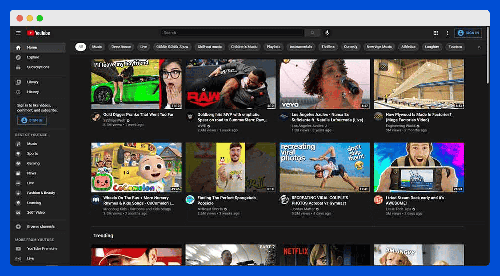
What Is YouTube Algorithm?
How did YouTube enter our lives? YouTube was a venture capital-funded technology startup that started in 2006. YouTube’s evolution in such a short time is truly astounding. But, there is something even more dizzying than the evolution of YouTube. This thing is the evolution of YouTube’s algorithm over this period of time. In fact, the development of the YouTube algorithm is a phenomenon that takes place in parallel with this huge growth of YouTube. Thanks to this development, the YouTube algorithm is the most dynamic feature of this platform. Let’s talk about the evolution of this algorithm over time.
First, we go back to 2012. 2012 is the most important breaking point in the evolution of the YouTube algorithm. Prior to this date, YouTube used a fairly simple metric to rank video success. To rank video success, it only considered video views, regardless of view length. As you may have experienced or imagined, this was causing a lot of problems. The biggest of these problems was clickbait and misleading and deceptive video titles. A large number of YouTubers also fell into these misleading traps. That is exactly why a metric that changed the fate of YouTube came into play. Since 2012, YouTube has started to use view length to measure video success. Thus, the platform had started to reward longer-watched videos with increased search promotion. That is an important step forward from the infancy of the incredibly advanced YouTube algorithm towards today.
As you can see, the roots of today’s advanced YouTube algorithm go back almost a decade. There are many other metrics that affect video success rankings today. Despite this, the watch length metric, whose roots go back almost a decade, is still the most effective of these metrics.
How Current YouTube Algorithm Works
As we mentioned in the previous sub-title, the YouTube algorithm started to use many different metrics during its historical evolution. That’s why it uses so many different metrics to determine video success today. In this part of this article, we will explain these metrics. Thus, we will try to explain how the YouTube algorithm works today. So, let’s get started right away.
What does the YouTube algorithm consider when recommending videos to viewers? YouTube has two main goals for this process. The first of these goals is to find and recommend the right video for every visitor on the platform. The second goal is to persuade these visitors to watch more videos and keep them on the platform.
The YouTube algorithm has three different selection systems. You may also call them discovery systems. These three systems are closely related to each other. However, they are also different from each other. Let’s get to know these systems more closely.
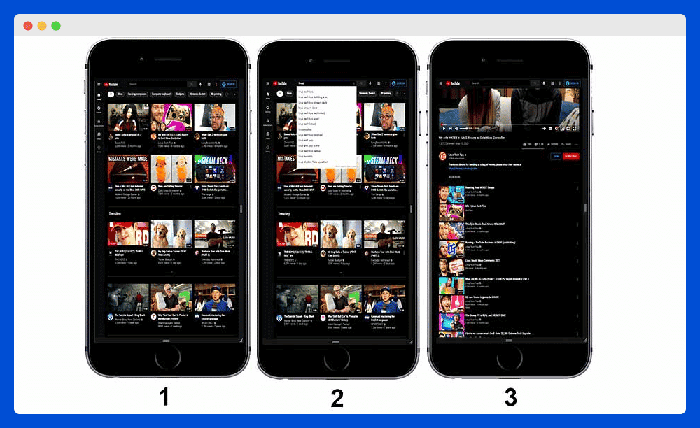
- One of these algorithm systems selects videos for the YouTube homepage.
- Another works to rank results best for any YouTube search.
- The third one works to select videos for YouTube viewers for the next watch recommendation.
Among them, we may say that the most important one is the algorithm that determines the video for the YouTube home page. Even YouTube made a statement on this subject in the current year. According to this statement, the sources that provide the most traffic to YouTube channels are home page recommendations. Right after this, YouTube states that the second source that provides the most traffic to the channels is the recommended videos. In this statement, they also stated the video types that get the most traffic from YouTube searches. According to this statement, educational and explanatory videos drive the most traffic from YouTube searches.
How YouTube Algorithm Ranks Videos on the Home Page
The YouTube homepage ranking algorithm determines the videos viewers are most likely to watch. Among these videos, it determines the most suitable series of videos for the viewer. Then, it displays these videos on that viewer’s home page. As you can see here, this algorithm selects different videos for each viewer’s YouTube homepage. It uses a combination of personalization and performance metrics while performing this process. Thus, it selects the most relevant videos for each viewer. So, what factors affect personalization and performance signals?
One of the factors affecting personalization signals is the user’s watch history. It analyzes the watch histories of each viewer. Another important factor influencing it is the YouTube channels with which the user interacts frequently. Similarly, the topic types of videos the user interacts with also affect that signals. Then, the homepage ranking algorithm blends the results of this analysis with performance signals. So, the interaction frequency of the users is the most important factor affecting the personalization signal. Watch history comes next.
Another important signal that the homepage ranking algorithm uses is video performance. The most important factor affecting these signals is average view duration. On the other hand, the homepage ranking algorithm also uses the click-through rate to evaluate the video performance.
Let’s blend the above data together. Thus, we can make the subject more understandable. The homepage ranking algorithm determines your watch history and the videos you interact with frequently. Then, it analyzes these videos according to the performance signals we have explained above. As a result of this analysis process, it shows the videos with the most successful performance on your YouTube home page. It also discovers new videos in line with these analysis results on the platform. Then, displays them on your homepage too.
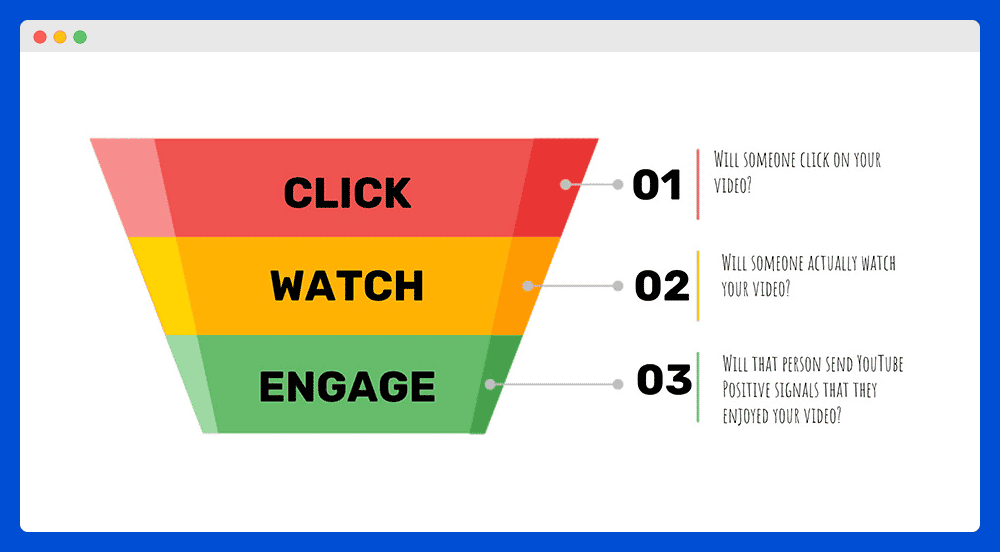
How YouTube Search Algorithm Works
As we mentioned earlier in this article, YouTube is the second largest search engine on the internet world. So, besides being a video-sharing platform, YouTube is also a search engine. As you know, one of the most important factors that a search engine’s algorithm considers in ranking results is SEO. That also applies to YouTube’s search algorithm. Let’s see how this process works.
To watch a particular video, a user types the title of the video into YouTube’s search engine. If you intend to watch a particular video, the search algorithm decides the results of your search. So, how does it determine results and their rankings? There are two different factors that the YouTube search algorithm considers while ranking results. These main factors are video performance and keywords.
Keywords
YouTube considers keywords to determine what a video is about correctly. To decide this, it looks at the keywords in the video’s metadata. So, make sure to include the right keywords in your video’s metadata so that your video will appear in search results. In order for your video to rank higher in search results, you will need to do a much more detailed keyword study. Let’s start talking about the performance factor, which is another factor that can move your video higher in search results.
Video Performance
So, the YouTube search algorithm has determined what your video is about by looking at the keywords. But there may be millions of different videos that fit these criteria. So, which of these will it show in search results? Also, which of them will it rank higher on the results screen? To determine this, it considers the performance of your video. We may list the main factors that determine your video’s performance as follows:
- Watch time
- Click-through rate
- Survey feedback
- Likes
- Comments
The main condition for this metric is that your video appeals to users searching for relevant keywords. Besides, the main condition for your video to rank higher in SERPs is that your video satisfies these people. Thus, your video will have the opportunity to reach a wider audience.

How Next Watch Recommendation Algorithm Works
This algorithm uses different considerations than others for the next videos it will recommend to users. It first evaluates the user’s viewing activity and interactions during the day or recently. So, as a user watches and interacts with videos throughout the day, this algorithm collects data about these activities. The more you continue to engage in activities on the platform, the more opinion it will have about you. According to these dynamics, it offers you different video options on the right side of your screen. Performance and personalization were more dominant in the decision-making mechanisms of other algorithms. However, this algorithm also offers its own recommendations to users in addition to these dynamics. It determines these recommendations based on the following factors:
- Similar and related videos in terms of topics
- Videos that the user often watches together
- Different videos that the user has watched before
At this point, it will be very useful for content creators to use the YouTube Analytics tool. Thanks to this tool, you may analyze other videos that your target audience has watched on the platform. Thus, you may explore and discover the interests of your target audience. This analysis will serve as a guide in determining your focus for your new videos. Likewise, producing the continuation of your successful videos on your channel will attract the attention of this algorithm. In the next sections of our article, we will also talk about the YouTube Analytics tool.
Marketers and YouTube Algorithm
If you’re marketing on YouTube, being able to move your video to the homepage will be an important event for you. However, in order to achieve this, you will need to maximize the performance of your video. So, how can you achieve this? First, you must of all look at your video with a completely objective eye. In fact, try to watch your video like a viewer who has never visited your channel before. In this context, ask yourself the following question. If you were a viewer, would the title and thumbnail encourage you to watch that video? If the answer to this question is yes, continue in the same way. Because you need to keep the audience interested in your videos. For this, you should upload videos of the same quality at consistent intervals. So, you need to help viewers build a routine around watching your channel.
There are a few strategies you can use to get your videos to appear in the recommended section. For this, it is best to upload a series of videos as a continuation of each other. So, making the continuation of your successful videos may be a good option you can consider in this context. You should also create identifiable branding for your channel. It may be beneficial to end your videos with a call to action to get your viewers to watch another video.
In automatic viewing, the viewing rate is dependent on external factors largely. However, if this drop lasts for a long time, you may need to try different things for your channel. That is true for channels that focus on specific topics especially. What we have explained above is the key to building viewer satisfaction for your channel.
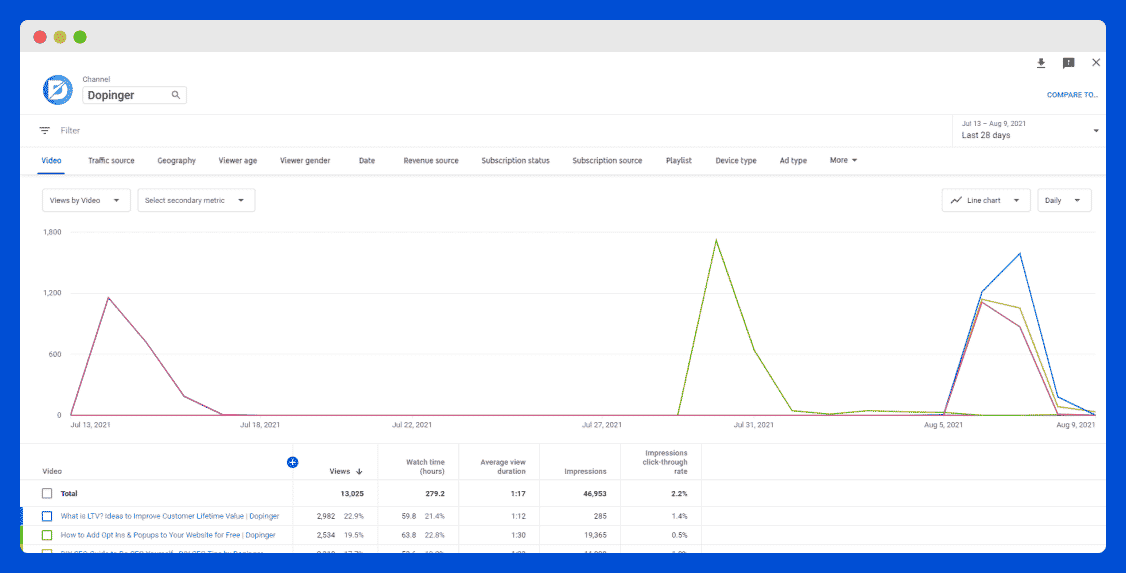
YouTube Analytics May Help You with the Algorithm
If you are developing a marketing strategy on YouTube, this tool will be your biggest assistant. This tool allows you to examine YouTube analytics in depth. All you need is to learn how to use this data to grow your channel. This tool is essential for both those who use YouTube as a marketing platform and YouTubers who aim to make money directly. YouTube has more than enough metrics to confuse. We may list some of these main metrics as follows:
- Traffic sources
- Audience demographics
- Keywords
- Watch time
- What the user has searched for in the past
- Click-through rate
- The user’s watch history
- How many videos the user has watched from your channel
Using these metrics in content development on your own will be quite difficult. However, YouTube Analytics is there to help you with that. So, it will help you to refine your content strategy over time. Thus, you will be able to create videos that motivate viewers to keep watching your channel. Let’s take a closer look at the metrics this tool has. We may list the metrics you can find under the Reach Viewers tab as follows:
- Impressions
This metric indicates the number of times your videos’ thumbnails are shown to users as suggested videos. That includes both homepage and search results suggestions.
- Traffic sources for impressions
It indicates on which traffic sources YouTube shows your video thumbnails to your potential viewers.
- Impressions click-through rate (CTR)
This metric is only based on logged-in impressions. It indicates how many users who see thumbnails of your videos have watched your videos.
- Views from impressions
It indicates how many users who see your videos have watched your videos.
- Watch time from impressions
That metric indicates the total watch time of the users who see your videos and your videos’ thumbnails.
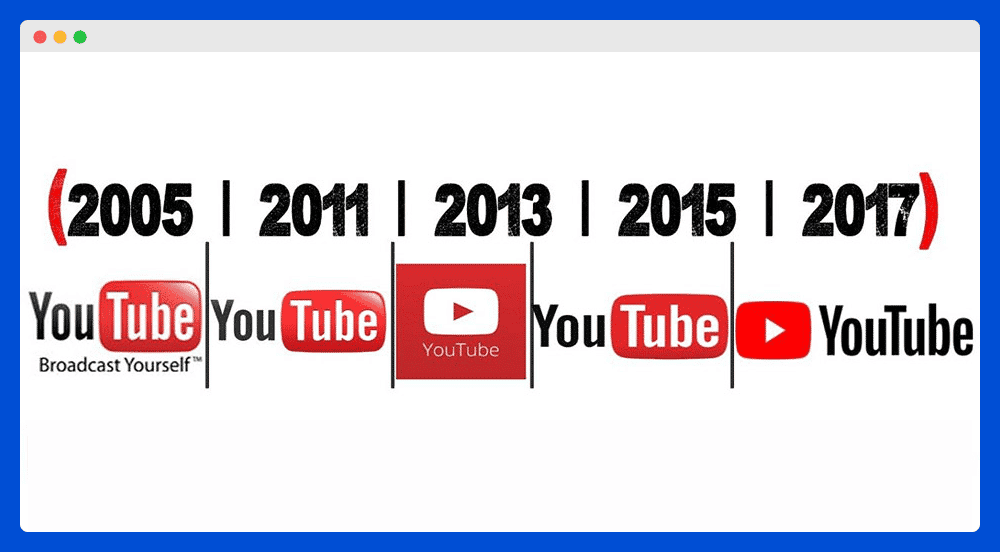
What Is Different In the YouTube Algorithm Today?
Today, it controls so many parts within YouTube. This controlling scope has expanded in this way with the development it has experienced since 2005. We may sort these parts as follows:
- Home
- Search
- Subscription
- Trending
- Notification
- Recommended videos
The main reason why it has evolved this way over time is to provide a better user experience for viewers. Thus, it helps users discover exactly the videos they want to watch easily. We have already talked about the evolution of the YouTube algorithm in history. Under this heading, we will cover what these changes are exactly.
One of the important issues with the new YouTube algorithm change is the video limitation. Many users are asking if the algorithm imposes a video upload limit on any channel. YouTube itself answers this. There is no specific video upload limit for any channel. So, let’s list some of these important changes.
- The quality of the videos affects the SERP ranking of your video significantly. So, the higher quality videos you upload, the higher rankings you will get.
- The more channels focused on a topic, the more competition there will be. Therefore, if you want to stand out, you should upload more relevant videos for viewers. In this context, you need to be sure your metadata matches user queries.
- The longer your videos are watched, the more likely the algorithm will recommend that video. So, make sure viewers watch your video till the end. Thus, the algorithm will think that this video may be suitable for other related viewers as well.
- Make sure your videos satisfy viewers. Thus, you may increase the engagement of your video by getting more likes and comments. That will provide the algorithm think this video may be suitable for other related viewers as well.
YouTube Algorithm, In Short
YouTube attracts a lot of attention because it is the largest video platform on the internet. In this article, we explained how YouTube works. We have also explained in detail how the algorithm selects YouTube recommendations. As a result, we touched on how YouTube algorithms suggest videos to users. While uploading a new YouTube video to your channel, it may be useful to pay attention to the topics in this article. In this way, you may succeed in increasing the YouTube rankings of your videos. We hope this article may help you on your YouTube adventure.
Frequently Asked Questions About
Any interaction that your video will get also increases your video’s score will get in the ranking. Thus, it will evaluate the interactions positively, such as likes, dislikes, and comments that your video will receive.
As you know, YouTube is also a search engine. In this context, SEO is important for your video to rank higher in YouTube search results. On the other hand, YouTube videos also rank in Google search results. Thus, SEO is also key to ensuring your videos rank higher in Google search results.
Comments, likes, dislikes, surveys, watch time, and clicks of the “not interested” button.
According to YouTube’s statement, there is no such limitation for any channel.
YouTube has made an algorithm change in this regard in 2019. This change has managed to reduce the consumption of borderline content by 70%.

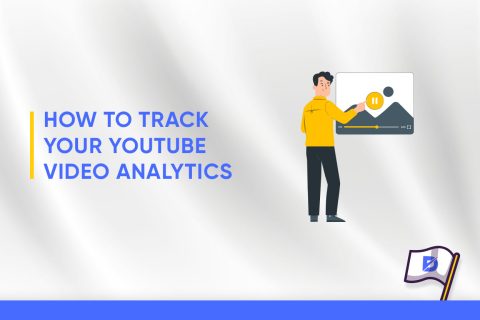

No comments to show.